E30 Rear Spring Replacement
How-To Credit
This how-to is a Classic Bimmer Bits original, with much credit due to the many members of the community who have helped us learn along the way!
Parts
- (2) Rear Springs (you can look up your OEM or pick aftermarket springs)
- (2) Upper Spring Pads (33531128610)
-
(2) Lower Spring Pads (you want to match the front, you can pick from any of these depending on what you already have or want)
- 5mm (33531136385) (Stock for springs with white dot)
- 7.5mm (33531136386) (Stock for other springs)
- 10mm (33531136387) (Stock for springs with red dot)
(We make a commission for parts purchased through the Amazon links above, which helps keep this site hosted and free. We only link to OEM or OE parts, the same quality parts that we use on our cars. However, you should always look around to see which site has the best prices.)
Tools
- 13mm wrench
- 13mm socket or 2nd 13mm wrench
- Spring compressor
- Pickle fork or other tool for leverage
Torque Specs (ft-lbs):
- Sway bar link bolt/nut: 17 ft-lbs (23 N-m)
Prodedure
Removal
- Jack up the rear of the car and put it on jack stands, and remove the rear wheels.
- Remove the rear shock.
-
To get the swing arm low enough to get the spring out, you’ll need to unbolt the sway bar link. Use one 13mm wrench to hold the nut in place, and use the other 13mm wrench to remove the bolt from the bottom of the link.

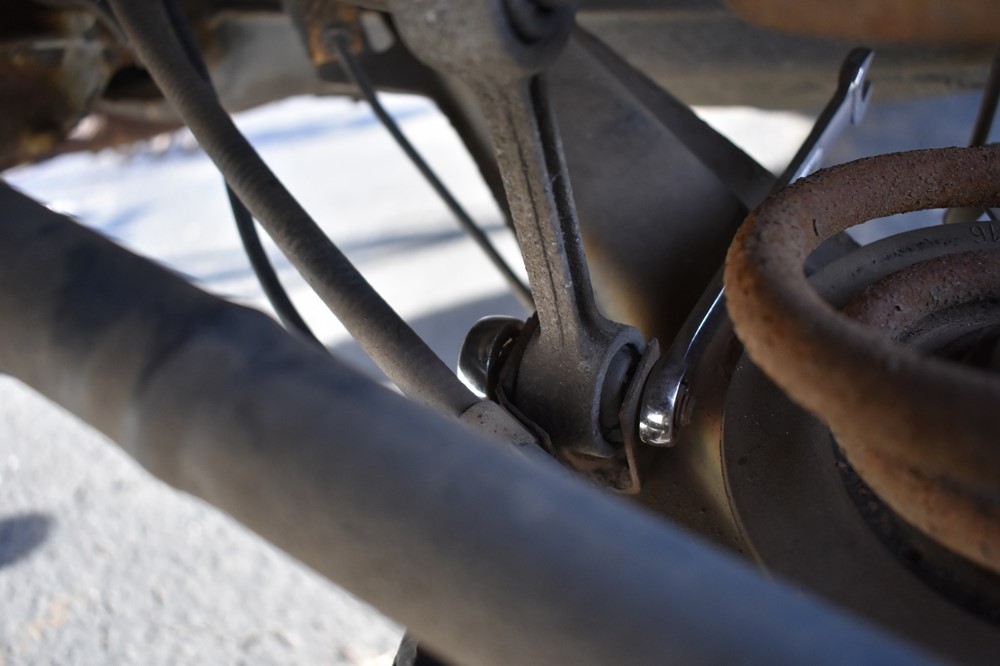
-
Even with the shock and sway bar unbolted, the spring still needs to be compressed to remove. If you’re working the right and safe way, use a spring compressor to compress the spring and pull it out of the car. This is really the right way to do it, and the way we recommend. However, it is possible to remove the spring without a compressor at this point. You’ll need a large lever (we prefer a pickle fork). Stick it under the bottom of the spring, pry the spring upwards, then push it towards the back of the car, until it pops free of the knob on the swing arm.
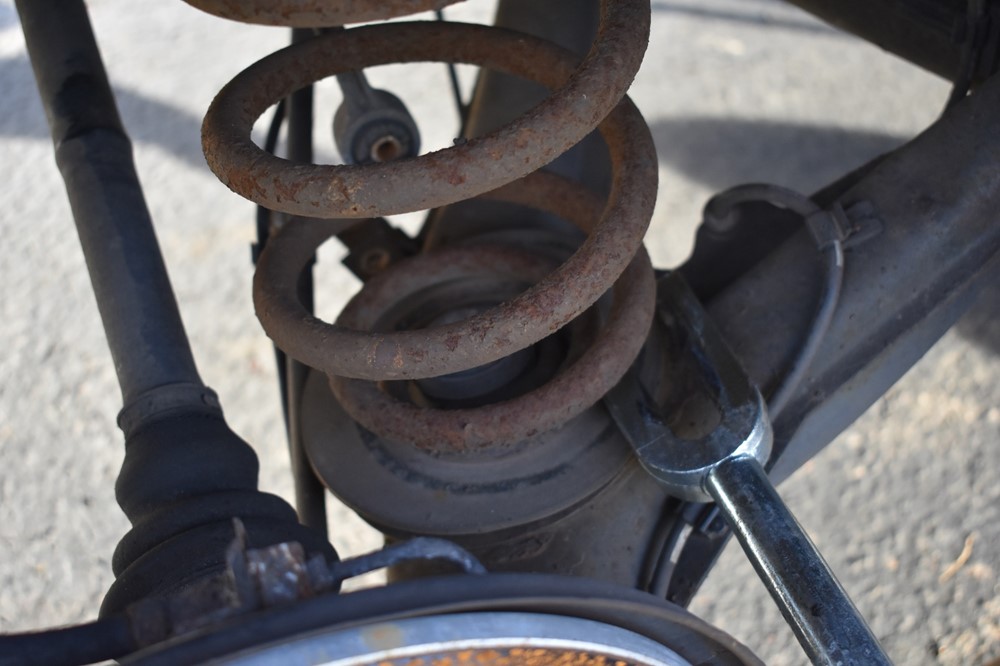
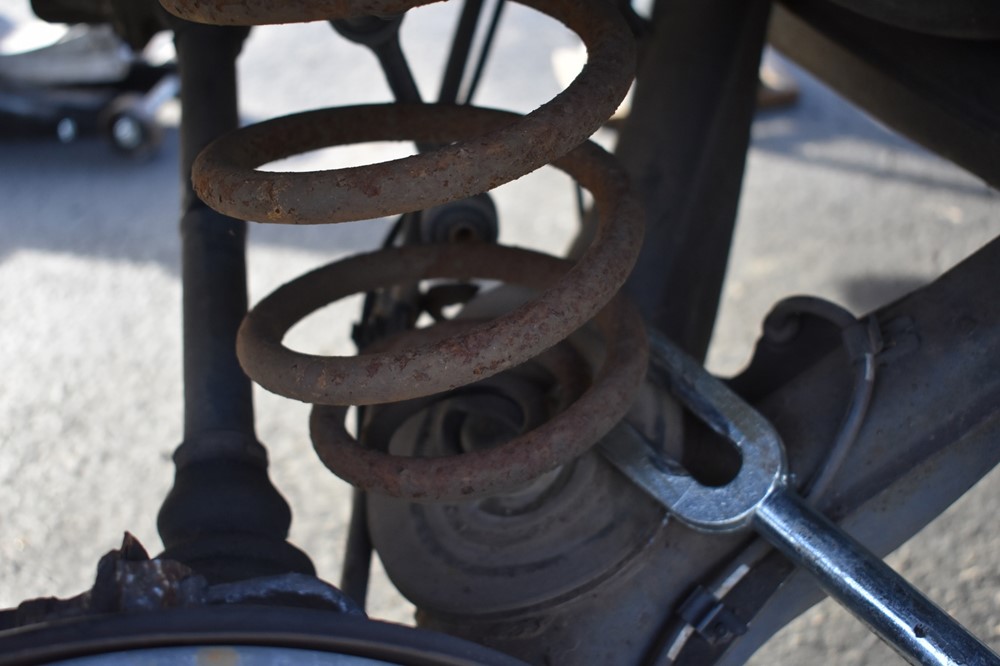
-
If the spring is still stuck on the top spring perch, wiggle and pull it free.
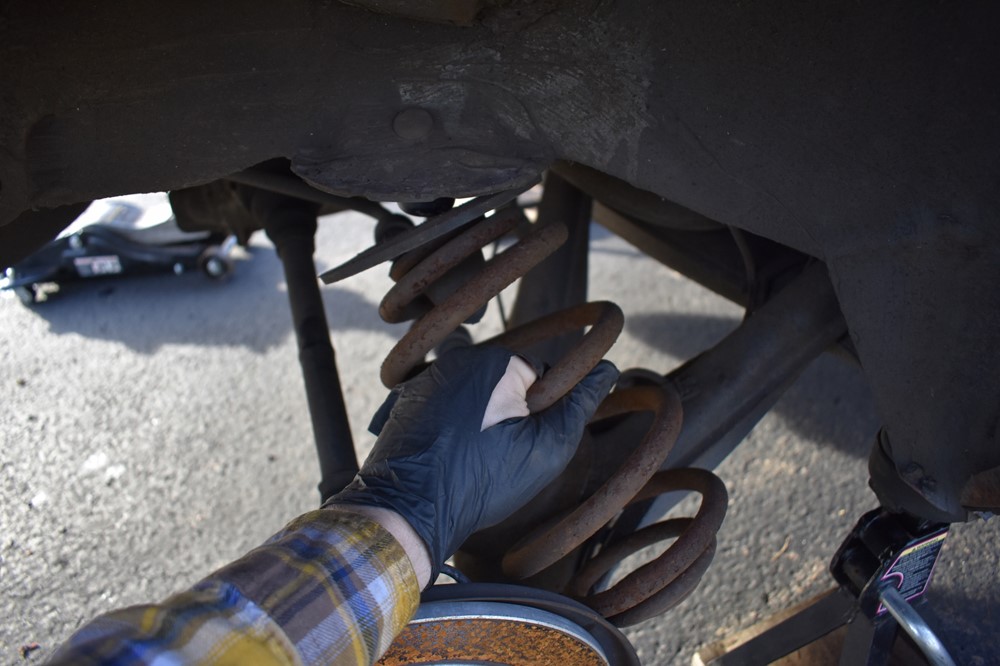
-
The spring pads may have pulled out with the spring, or they may have stuck on the car. If they’re still on the car, remove them. This is a good opportunity to check their condition and decide if you’ll be replacing them. If they’re relatively clean and in reasonable shape, there’s nothing wrong with re-using them. If they’re badly pitted and have deep worn grooves like these ones, it’s probably worth replacing them.

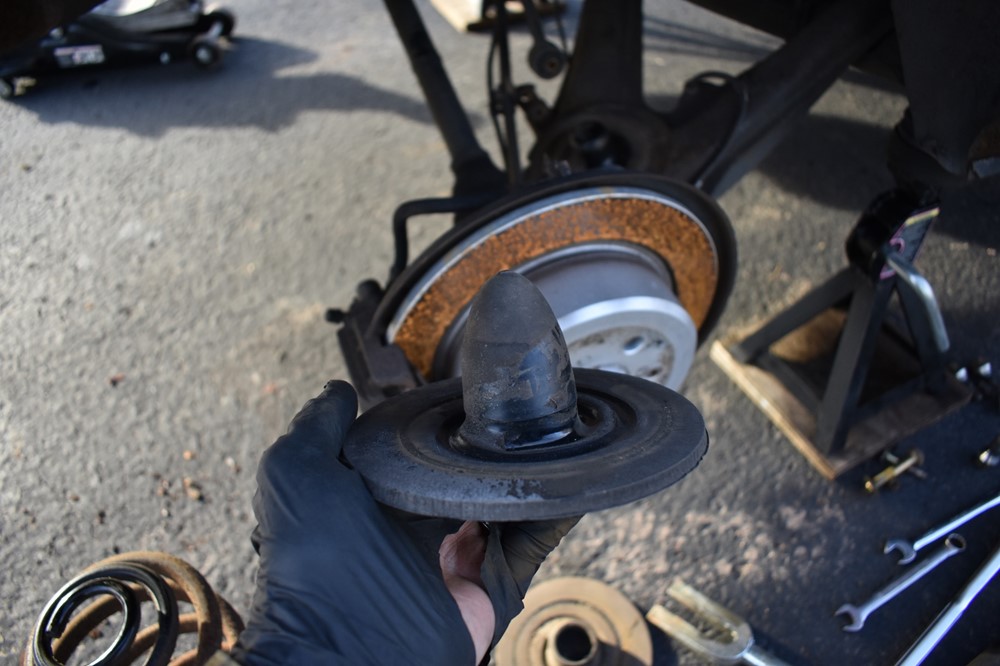
-
Clean the top spring perch on the chassis and the bottom spring perch on the swing arm, removing any dirt and debris.
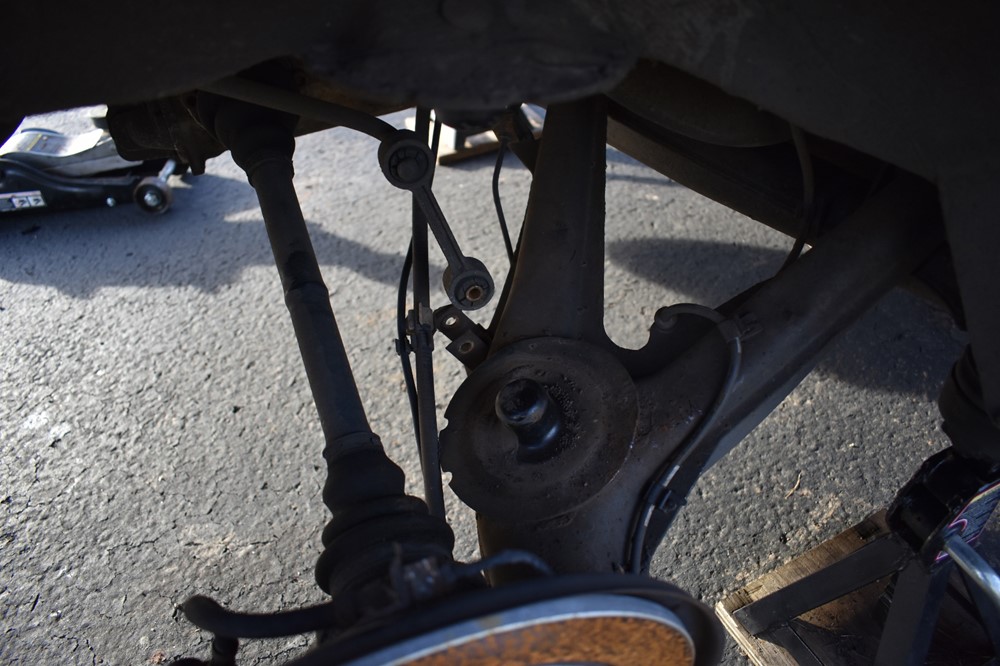
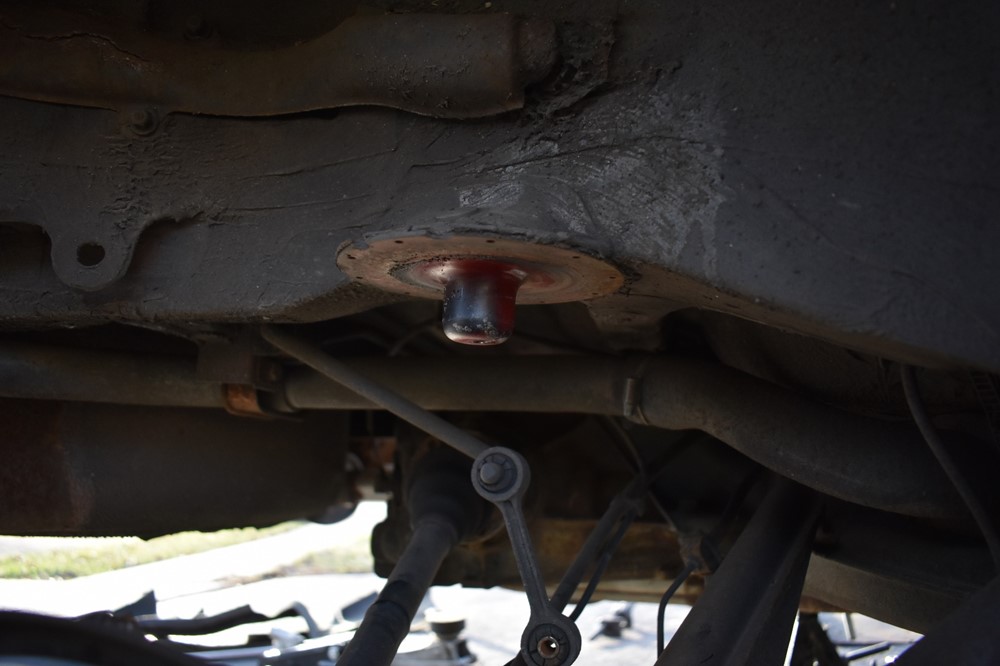
Installation
- Now you’re ready for reinstallation. If you’re upgrading to lowering springs (do it!), then your task is much easier, since you’ll barely need to compress the spring to install it. If you’re re-using or replacing stock springs, you’re really going to need a spring compressor here.
- Reinstall the bottom spring pad onto the post on the swing arm. It should fit snugly over the post.
-
Install the top spring pad into the top of the new spring
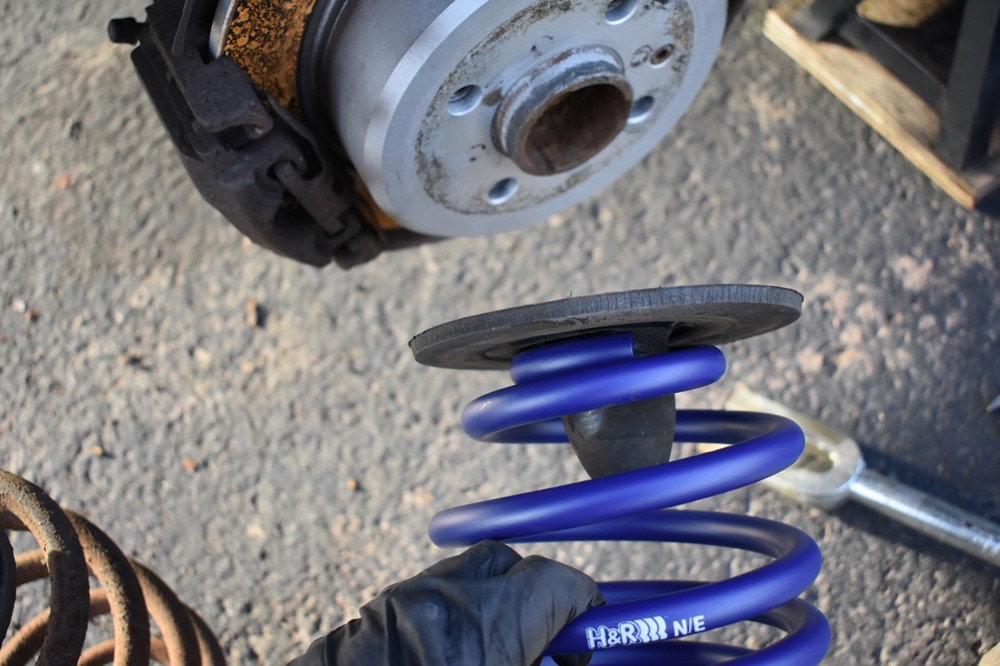
- If you’re using stock height springs, use a spring compressor to compress the spring down by a couple of inches. If you’re using springs that are 1″ or more lowered from stock, you won’t need a compressor.
-
Install the top end of the spring, pushing the top of the spring and pad over the post on the chassis.
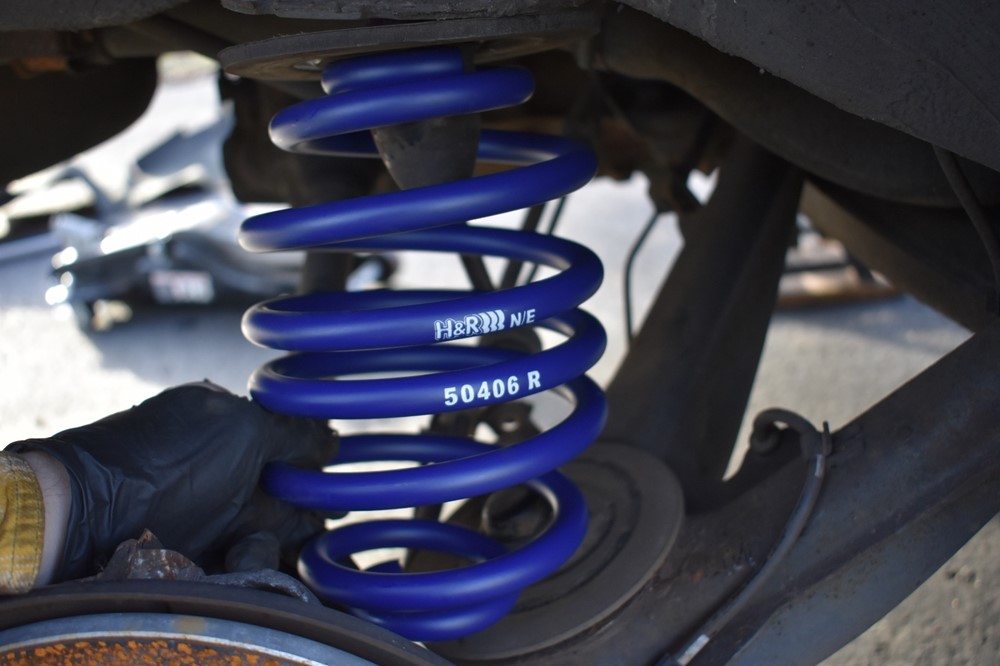
-
Now push the bottom of the spring over the post on the swing arm, and seat it on the pad. It may take a little bit of wiggling or pushing.

-
If you’ve compressed the spring, you can un-compress it now. Make sure the bottom of the spring is centered and fully seated on the pad.

-
Next you need to align the sway bar link back into the bracket on the swing arm by jacking up the swing arm. This corresponds well with step 4 of installing the rear shock, so jump over to the rear shock replacement how-to and follow the installation up to step 4.
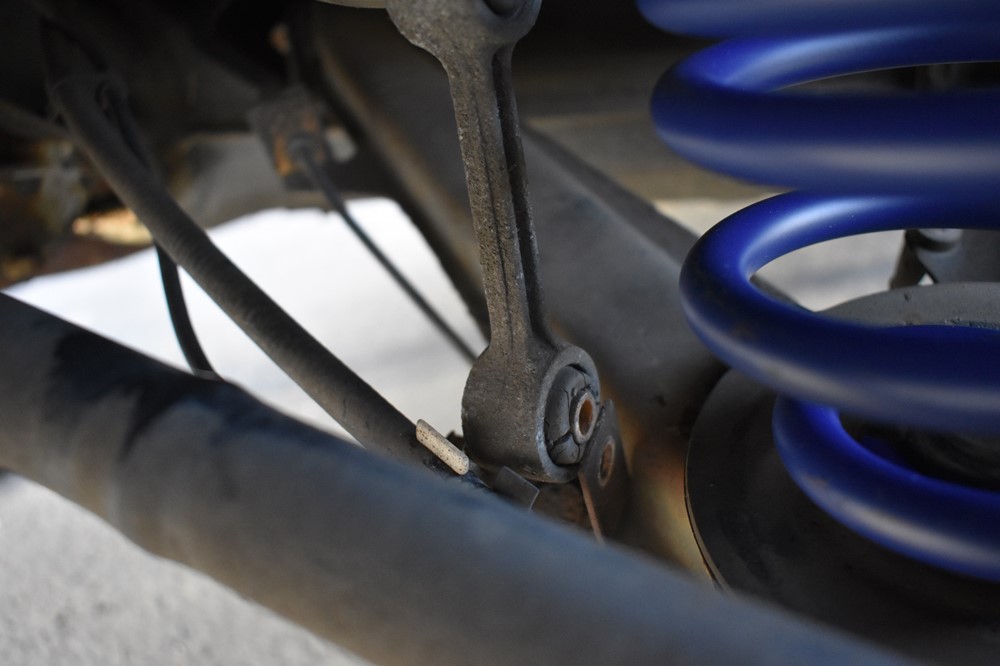
-
Jack up the swing arm until the holes in the sway bar link align with the holes in the bracket.
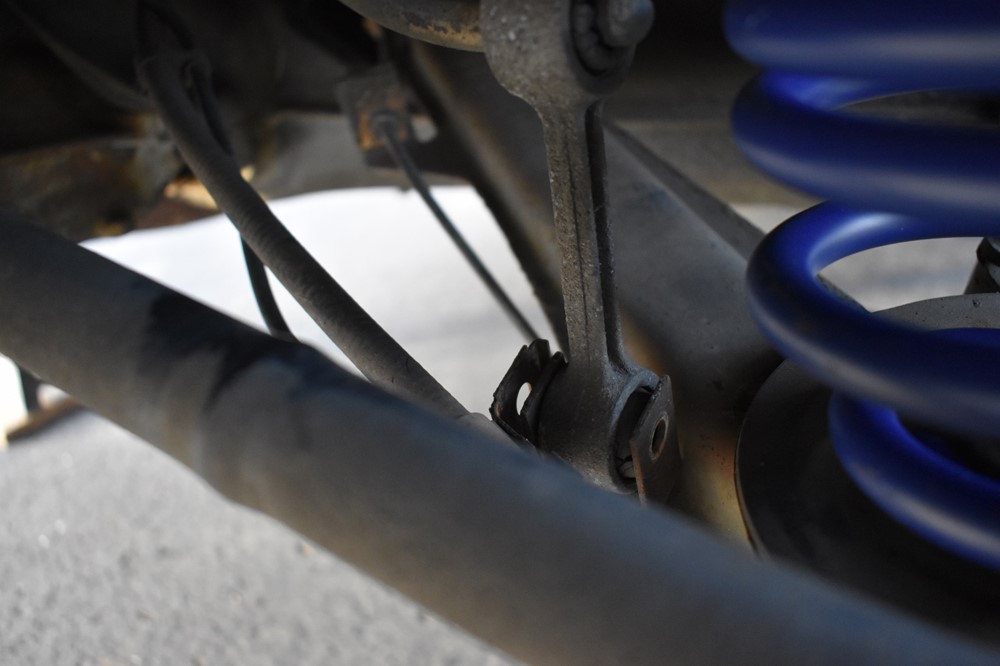
-
Insert the bolt through sway bar link, install the nut, and tighten to spec.

- Finish installing the rear shock.
- Reinstall the rear wheels.
- Lower the car off the jack stands.
- Tighten the wheel bolts to spec.
- It may take a couple of drives for the springs to settle into their final position on the pads, so don’t worry if the ride height doesn’t look exactly right when you first lower the car off the jack stands.

